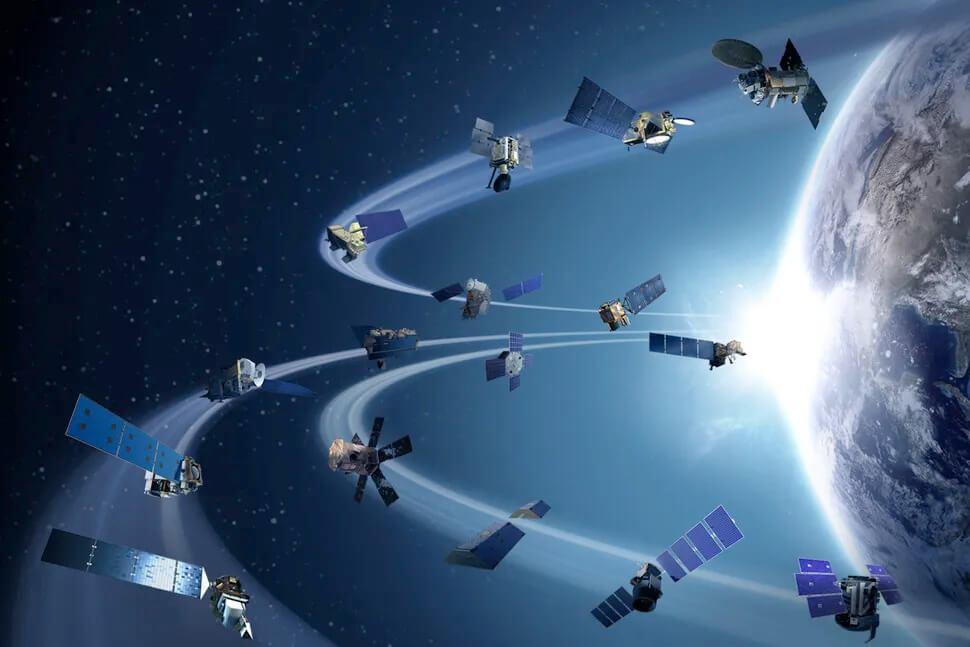An international team is currently closely tracking the near-Earth asteroid 2024 YR4. The impact probability estimates for the year 2032 has been reduced from a peak of 3 percent to below 0.001 percent.
Asteroid 2024 YR4, first discovered in December 2024, triggered a first-ever notification from the International Asteroid Warning Network (IAWN) on January 29th 2025. The early calculations predicted an impact probability of 1.3% with Earth on December 22nd 2032 and estimated its size between 40 and 90 meters. These estimates gave the asteroid a Torino scale rating of risk level 3 in the range of 0-10, which meant a target meriting close attention by astronomers.
The global astronomy community quickly launched an international observing campaign, in which the researchers at the University of Helsinki have been at the forefront. Postdoctoral researchers Zuri Gray and Grigori Fedorets have been following the asteroid closely since January 30th.
They observed the asteroid using the 2.5-meter Nordic Optical Telescope (NOT) in La Palma, Canary Islands, which the Finnish astronomers have used for a long time to study asteroids close to Earth.
- We have been focusing on the asteroid's precise position and motion, and to analyse its rotation, size and shape. This information is crucial for better predicting the asteroid's future trajectory, and ultimately refining its impact probability, says Gray.
- Our recent observations continue to demonstrate the vital role that NOT plays in planetary defence efforts on a global level, adds Fedorets.
Lunar impact as a risk
During mid-February, 2024 YR4's impact probability peaked at 3%. It is the highest ever probability attained by any asteroid of the size range to pose a significant threat, in the recorded history of asteroid impact risk estimates.
The observations were briefly halted due to the full moon drowning out the asteroid's faint signal, but the researchers in Finland were the first to obtain new data following the full moon. The observations resulted in a significant drop in the impact probability, which currently stands below 0.001%.
Meanwhile, the latest data and calculations have brought out a new, although a smaller risk: there is currently a 4 % chance of the asteroid impacting the Moon instead.
- Should the asteroid impact the Moon, the Earth-Moon system could be clouded with particles detached from the Moon and the asteroid, potentially threatening the human space infrastructure and operations, explains Academy Professor Karri Muinonen .
Infrared radiation refined the size estimate
The James Webb Space Telescope observed the asteroid on March 26th. The postdoctoral researcher Eric MacLennan is a key member of the team analysing the asteroid's infrared properties. James Webb is currently the only telescope with the capability to measure thermal emission.
- The initial diameter estimate of the asteroid was limited to visible light measurements, which depend on both the size and reflectivity of the surface. However, thermal emission at infrared wavelengths is a direct indicator of the size. Our first attempt to observe the thermal emission on March 8 was not successful, so it was a relief when the images were transmitted back from the telescope, explains MacLennan.
After hours of work, the team arrived at an estimate: there´s 95 % chance the diameter is 46 - 74 meters. This size determination will help astronomers assess the potential consequences of an impact with the Moon.
Despite the reduced risk, Earth-based and space-based observatories will continue tracking YR4 through April or May 2025, after which it will be unobservable from Earth until its next close approach in 2028.
Persistent work paid off
In February, NOT was one of the most fast-acting and accurate data providers in comparison to other similar instruments for the global planetary defence community - a testament to the dedicated long-term work for the telescope by its staff, engineers, students, and scientists from the Nordics.
- We were able to very quickly observe the asteroid and refine the estimates for it. The flexible, high-quality, medium-sized astronomical facilities like the NOT are crucial for rapid follow-up of these type of potentially hazardous asteroids, says Associate Professor Mikael Granvik
- We have unique scientific know-how at the University of Helsinki for contributing to planetary defence, encompassing astronomical observations, laboratory measurements, theoretical and numerical research, and characterising near-Earth object orbits, rotational states, shapes, and surface structure and composition, summarises Muinonen for the background of the success.
In Finland, the governmental responsibility for the risk assessment of near-Earth objects belongs to the National Land Survey, and in the near future the Space Situational Awareness Center, which is currently being established. Monitoring the risks posed by near-Earth objects is one of the key areas of responsibility for the new Space Situational Awareness Center, in addition to the possible risks posed by space weather, space debris, and satellite operations.
- The comprehensive expertise of astronomers at the University of Helsinki in asteroid research is a critical part of the expertise needed at the governmental level to assess the possible impact risks caused by the near-Earth objects for Finland similar to other countries, summarizes Senior Research Scientist and Academy Research Fellow Anne Virkki .
Original article
A. S. Rivkin, T. Mueller, E. MacLennan, B. Holler, A. Burdanov, J. de Wit, P. Pravec, M. Micheli, M. Devogele, L. Conversi, C. A. Thomas, D. Farnocchia, J. L. Dotson, L. Wheeler, H. Hammel, S. N. Milam, J. de Leon, and A. Glantzberg. JWST Observations of Potentially Hazardous Asteroid 2024 YR4. 2025 Res. Notes AAS 9 70 DOI 10.3847/2515-5172/adc6f0
Contact information
Postdoctoral Researcher Zuri Gray, +358 (0)50 562 5498
Postdoctoral Researcher Grigori Fedorets, +358 (0)41 5340134
Postdoctoral Researcher Eric MacLennan, +358 (0)41 3159592
Associate Professor Mikael Granvik, +358 (0)50 318 2271
Academy Professor Karri Muinonen, +358 (0)50 415 5474
Academy Research Fellow Anne Virkki, +358 (0)50 516 1549






